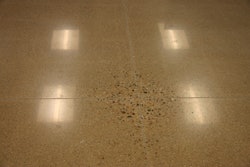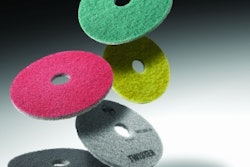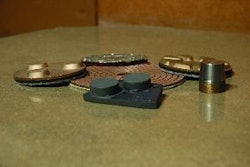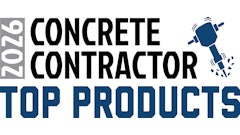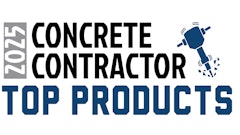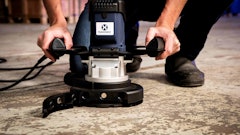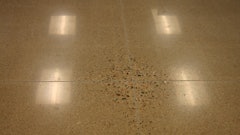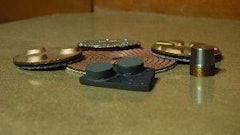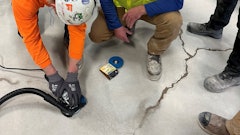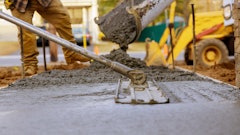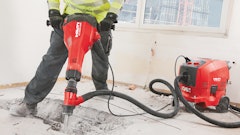
Maintaining the aesthetic appeal of polished concrete floors is crucial, as according to a Forbes.com article, you only have seven seconds to make a good impression. If a customer walks in and sees damaged or dull floors, they may conclude that the overall business is not well-kept. Traditionally, gloss measurements were the standard for assessing a floor’s reflective quality. In recent years, the spotlight has shifted towards a more reliable and consistent metric, distinctness of image (DOI). This standard provides a more precise and accurate characterization measure of a floor’s visual appeal. This DOI measurement represents what the customer perceives as the cleanliness of floors.
Understanding Surface Appearance Measurements
Gloss measurements used to be the go-to standard for evaluating a floor's reflective quality. It requires a gloss meter to focus a bright light onto the floor at a specific incident angle. This light beam, known as the incident beam, measures the intensity of light reflected from the floor. While gloss measurements are effective for some measurement of aesthetic quality, they fall short of capturing the full aesthetic quality of polished concrete surfaces.
A much more effective measure of the aesthetic quality of your polished concrete floors is Distinctness of Image (DOI) measurements. DOI characterizes the aesthetic quality of a polished surface by measuring how much light scatters or spreads out from roughness and imperfections in the polished surface. DOI offers a more comprehensive understanding of your floor's aesthetic quality.
What are DOI Measurements?
DOI measures the clarity and sharpness of reflected images on a polished surface. Unlike gloss measurements, which focus exclusively on one attribute (brightness), DOI considers all attributes of the reflected image. A DOI meter and Gloss meter use the same focused light source, but for the DOI measurement, multiple sensors are arranged in the reflected light beam to capture the distribution and scattering of reflected light. DOI values range from 0 to 100, with higher values indicating superior image clarity and definition, with, for example, a mirror surface at 100.
Conducting DOI measurements requires specialized equipment. The DOI measurement is typically taken at a 20-degree incident angle, similar to what the eye perceives. The process involves positioning the DOI meter on the polished surface so that the meter can accurately capture the distribution of the reflected light. The method ensures a comprehensive measure of the visual image quality and “shininess” of the floor’s reflection.
The transition from traditional gloss measurements to DOI measurements presents a new tool for evaluating polished concrete surfaces. It captures the subtleties of surface quality, quantifying a visually stunning surface that surpasses traditional gloss measurements. DOI indicates the clarity and sharpness of a reflected image, while gloss indicates only the brightness of a reflected image.
Clarity and sharpness indicate cleanliness in the customers' eye, while gloss measurements alone do not. With gloss measurements, light that is deflected or scattered outside that range because of roughness or other floor imperfections is not measured, meaning you will not have the entire image of your floor’s reflective/aesthetic quality.
Benefits of DOI
DOI enables precise measurements of surface appearance. By standardizing aesthetic measurement, DOI ensures uniformity in the surface appearance. Additionally, DOI measurements help characterize aspects of surface durability, contributing to extended service life and helping reduce maintenance costs. On the other hand, Gloss is not an indication of floor or polish quality. Because a chemical application or other methods can increase Gloss measurements, they can be misleading and do not focus on the full quality of the polish/floor. Gloss can rapidly deteriorate shortly after floor installation with regular wear & tear that floors see on a day-to-day basis. While DOI measurements can not be “falsified” by chemical applications, DOI gives you a true, more sustainable measure of your floors' aesthetic quality. Furthermore, DOI does not deteriorate under the same conditions as gloss when proper maintenance protocols are followed.
While gloss measurements traditionally served as the standard for assessing your floors' reflective quality, DOI now presents a better tool. Embracing the DOI approach affords a more accurate and comprehensive understanding of your polished concrete floors’ reflective attributes.






